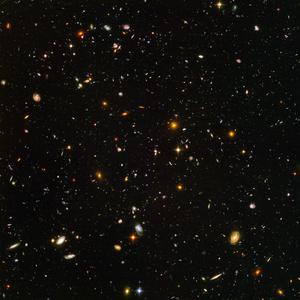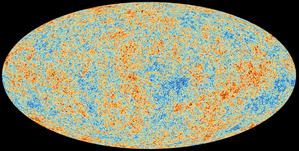Glossary term: Cosmology
Description: Cosmology is derived from the Greek words kosmos (harmony or order), and logos (thought or reason). Cosmology as a discipline has its roots in philosophy and religion; various cultures around the world have their own cosmologies that aim to interpret and make sense of the Universe. Over the years cosmology has evolved to be a precision observational science. This has been made possible through the development of advanced ground-based and space-based observatories, together with pioneering theoretical work and computer simulations. Cosmology as a scientific endeavor aims to understand the evolutionary history, formation, structure, and future evolution of the Universe as a whole on the largest scales, by understanding the fundamental physical mechanisms operating within the Universe.
Related Terms:
- Accelerating Universe
- Astronomy
- Astrophysics
- Big Bang Theory
- Cepheid Variable
- Cluster of Galaxies
- Cosmological Principle
- Cosmos
- Dark Energy
- Dark Matter
- Observable Universe
- Theory of General Relativity
- Universe
See this term in other languages
Term and definition status: This term and its definition have been approved by a research astronomer and a teacher
The OAE Multilingual Glossary is a project of the IAU Office of Astronomy for Education (OAE) in collaboration with the IAU Office of Astronomy Outreach (OAO). The terms and definitions were chosen, written and reviewed by a collective effort from the OAE, the OAE Centers and Nodes, the OAE National Astronomy Education Coordinators (NAECs) and other volunteers. You can find a full list of credits here. All glossary terms and their definitions are released under a Creative Commons CC BY-4.0 license and should be credited to "IAU OAE".
If you notice a factual error in this glossary definition then please get in touch.
Related Media
Hubble Ultra Deep Field
Credit: NASA, ESA, and S. Beckwith (STScI) and the HUDF Team credit link
License: CC-BY-4.0 Creative Commons Attribution 4.0 International (CC BY 4.0) icons
Cosmic Microwave Background Radiation
Credit: ESA/Planck Collaboration credit link
License: CC-BY-SA-4.0 Creative Commons Attribution-ShareAlike 4.0 International (CC BY-SA 4.0) icons










